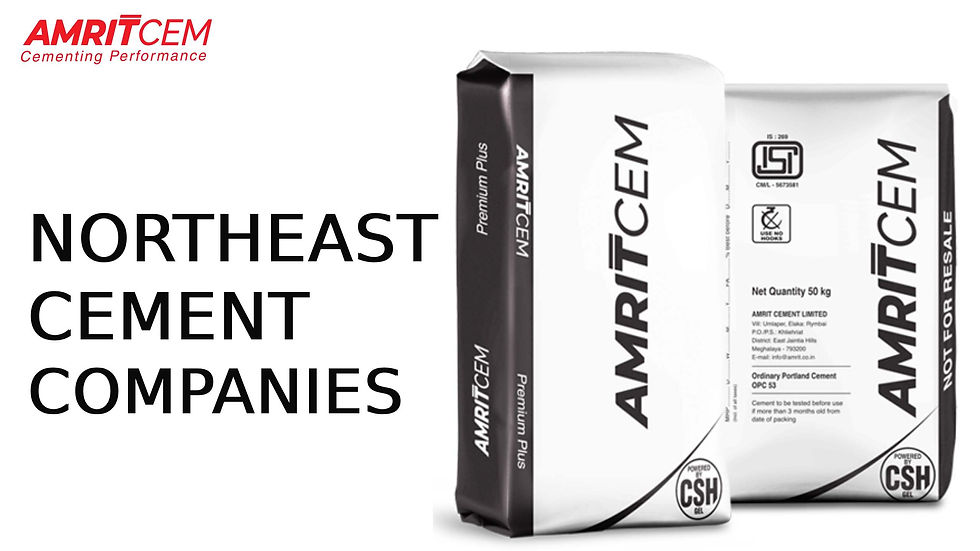The Evolution of the Cement Industry: From Ancient to Modern Times
- Amrit Cement
- Sep 16, 2024
- 3 min read

The cement industry has undergone a significant transformation over the centuries, from the rudimentary binders of ancient civilizations to the high-tech, efficient manufacturing processes of today. Understanding the evolution of cement not only highlights technological advancements but also provides insight into how it shapes modern construction. Whether you're a history enthusiast or a professional in the cement industry, this topic offers a fascinating journey through time.
1. The Early Days: Cement in Ancient Civilizations
Cement has been used as a building material for thousands of years. The earliest known form of cement dates back to ancient Egypt, where the pyramids were built using a form of gypsum cement. Meanwhile, the Romans advanced the technology by developing pozzolana, a volcanic ash-lime mixture that was used to build the famous Roman structures, such as the Pantheon and aqueducts.
Key Developments:
Ancient Egypt's use of gypsum cement.
Roman innovation with pozzolana.
Cement as a critical binder in ancient construction.
2. The Rise of Portland Cement: A Modern Breakthrough
In the early 19th century, Joseph Aspdin revolutionized the cement industry by creating Portland cement. This type of cement, made from limestone and clay, could be fired in a kiln, creating a much stronger material. This development became the foundation of the modern cement industry, allowing for the mass production of stronger, more durable cement.
Technological Milestones:
Development of Portland cement.
Introduction of kilns for large-scale production.
Enhanced durability and strength of modern structures.
3. Technological Advancements in the 20th Century
The 20th century saw significant technological advancements in cement production, with the development of more efficient kilns, the introduction of new raw materials, and better quality control. The production of OPC 53 (Ordinary Portland Cement), known for its superior strength, and the emergence of PPC (Portland Pozzolana Cement), favored for its eco-friendly properties, were important milestones.
Today, Amrit Cement, a leading brand in India, produces a variety of cement types, including OPC and PPC, catering to different construction needs. The brand's focus on quality and innovation has made it a top choice for projects requiring high-strength materials, particularly OPC 53 for construction demanding superior durability.
Modern Cement Varieties:
OPC 53: Known for its high strength, making it ideal for large-scale projects like bridges and high-rise buildings.
PPC Cement: An eco-friendly alternative that offers durability while reducing the carbon footprint.
Which Grade Cement is Best: Depending on the project, OPC 43 or OPC 53 can be selected based on the required strength and setting time.
4. Automation and Sustainability in the 21st Century
The 21st century has brought automation and sustainability to the forefront of the cement industry. With the advent of Industry 4.0, cement manufacturers now use smart technologies for better efficiency and reduced waste. Amrit Cement has been a pioneer in adopting green technologies to minimize its environmental impact, particularly with its production of best PPC cement in India.
Sustainability Focus:
Use of alternative fuels and raw materials.
Waste heat recovery systems for energy efficiency.
Increased production of eco-friendly cement, like PPC.
5. The Future: Innovation and Growth in the Cement Industry
The future of the cement industry looks bright, with the promise of more innovations in materials and technology. New trends include the development of carbon-negative cement and smart materials that can self-heal or change properties based on environmental conditions.
For those looking to enter the cement dealership business, the industry’s evolution presents immense potential. As demand for quality cement continues to grow, opportunities for dealership and distribution expand. Amrit Cement offers lucrative cement agency dealership opportunities, with a focus on delivering high-quality materials like OPC 53, OPC 43, and PPC cement. The cement dealership business offers a stable, long-term investment, particularly as infrastructure projects surge across India.
Conclusion: A Journey from Ancient Times to Modern Innovation
The cement industry has evolved from simple binders to complex, high-performance materials essential to modern construction. Brands like Amrit Cement continue to push the boundaries of innovation, producing some of the best cement for dhalai, large-scale infrastructure projects, and eco-friendly alternatives. As technology and sustainability practices evolve, so too will the materials that form the foundation of our cities and structures.
By looking back at the history of cement, we gain a deeper appreciation for the modern advancements that shape the future of construction.
Key Takeaways for Professionals and Enthusiasts:
OPC 53 and OPC 43 are essential for high-strength construction.
PPC cement is a sustainable, durable choice for eco-conscious projects.
The cement dealership business offers growth opportunities for entrepreneurs, particularly in collaboration with established brands like Amrit Cement.
By understanding the industry’s past and future, professionals can make informed decisions that align with both current demands and future trends.



Comments